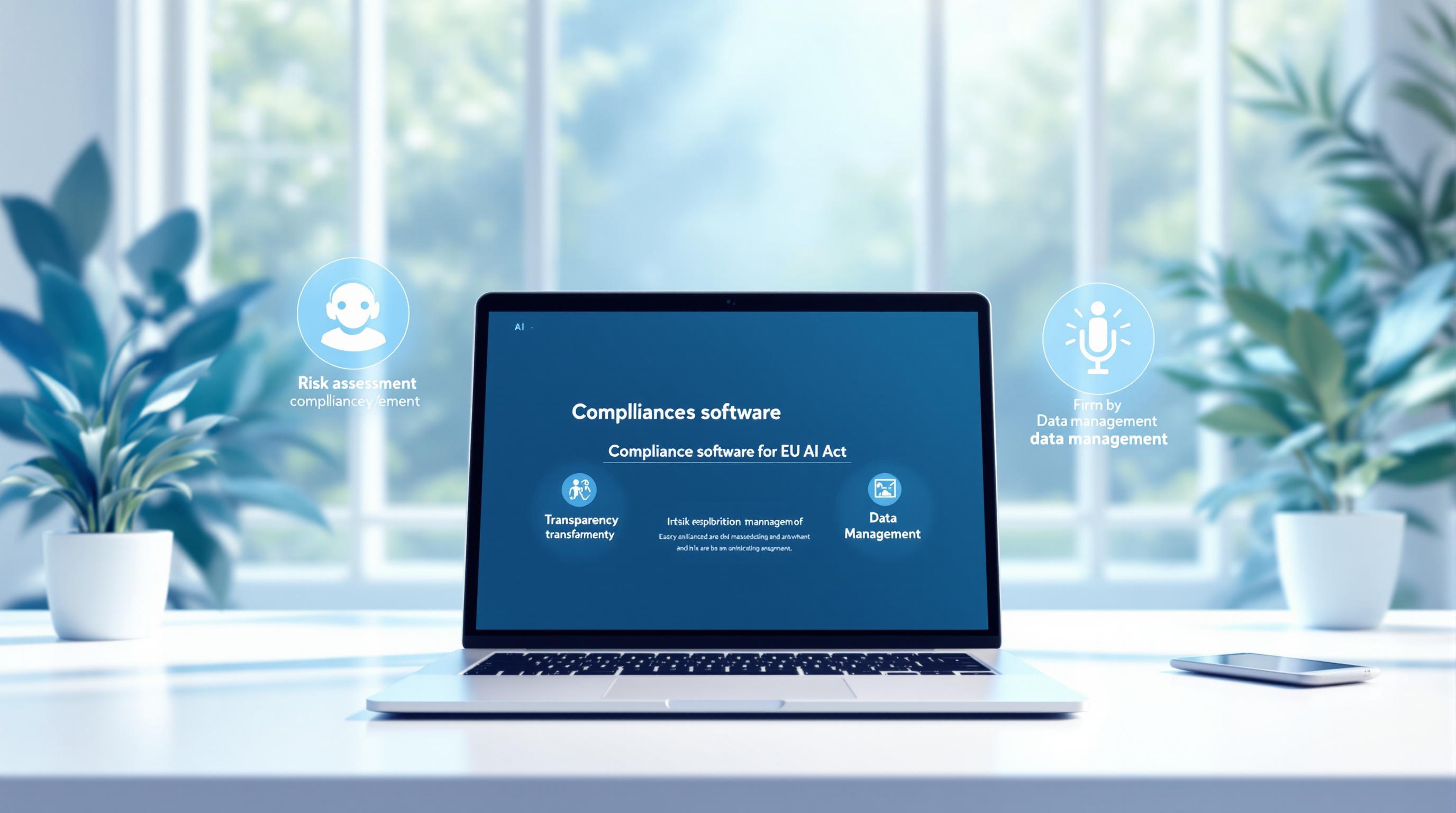Anomaly detection is key in identifying data irregularities that could signal errors, fraud, or system issues. With the overwhelming amount of data today, manual monitoring is impractical, leading to the rise of no-code anomaly detection tools. These platforms offer a user-friendly way for anyone, regardless of technical expertise, to identify and analyze anomalies in data. This guide covers:
- What is Anomaly Detection? Spotting data that deviates from the norm.
- Applications: From fraud detection to health monitoring.
- Challenges with Traditional Methods: Including the need for coding skills and complex data pipelines.
- How No-Code Anomaly Detection Works: Simplifying anomaly detection through automation and machine learning.
- Benefits: Easy adoption, rapid implementation, and scalability.
- Choosing a Tool: Key features to look for in no-code platforms.
- Popular Platforms Compared: Anodot, Metaplane, and DataThirst with their ease of use, customization, scalability, and pricing.
- Implementing in Your Workflow: Steps to get started and best practices for efficiency.
- Future Trends: The role of AI and machine learning in enhancing no-code anomaly detection.
This primer aims to equip you with the knowledge to leverage no-code anomaly detection tools effectively, ensuring your data remains accurate and your systems secure.
Understanding Anomaly Detection
What is Anomaly Detection?
Anomaly detection is about finding data that stands out because it's not like the rest. Think of it as spotting the odd one out. These unusual bits of data are sometimes called outliers, novelties, noise, or just surprises, depending on the situation.
Here are a few examples:
- Outliers: These are data points that are way different from the rest. Like if you see a super high bill amount, it might mean someone's trying to pull a fast one.
- Novelties: These are new patterns in data that weren't seen before. It could be a sign of a new type of fraud or a broken sensor.
- Noise: This is just random errors or messed-up data. It's like when a sensor starts glitching.
To find these odd bits, you first need to know what 'normal' looks like for your data. This could be based on what usually happens or on fancy math models. Anything that doesn't fit this 'normal' picture gets flagged for a closer look.
Real-World Applications of Anomaly Detection
Anomaly detection is super useful in lots of areas:
- Fraud detection - Helps catch weird transactions or login tries that might be scams.
- Industrial damage detection - Spots early signs of machines breaking down from sensor data.
- Network intrusion detection - Finds unusual internet traffic or user actions that could mean a cyberattack.
- Health monitoring - Catches strange patterns in medical scans or health records for early sickness spotting.
The main goal is to catch these oddities early to prevent bigger problems. With more data coming from all over, spotting these anomalies is becoming a must-have skill.
Challenges in Traditional Anomaly Detection Methods
But, getting anomaly detection right can be tricky:
- Coding expertise - Usually, you need a lot of tech skills to build these systems.
- Complex data pipelines - It's a hassle to get data ready and in the right shape.
- Lack of automation - Keeping systems up-to-date with new data is a manual pain.
- Poor scalability - Old-school solutions don't grow well with more data or new types of data.
That's where no-code anomaly detection platforms come in. They let anyone upload and check data for weirdness without needing to code. They're designed to be easy to use, automatically update, and handle lots of data, making spotting anomalies a breeze.
No-Code Anomaly Detection Platforms
How No-Code Anomaly Detection Works
No-code anomaly detection platforms are like smart assistants that help you find weird or unusual data without needing to be a tech whiz. Here's what they do:
- Automated data pipelines - They clean up and sort your data automatically, so you don't have to mess with complicated setups.
- Integrated analytics - They come with built-in tools that let you peek into your data to understand what's normal and what's not. This helps in setting things up correctly.
- Flexible machine learning models - These platforms use smart algorithms to learn from your data and spot the odd ones out. You can adjust these models to better fit what you're looking for, all without writing a single line of code.
- Monitoring and alerts - Once everything's set up, the platform keeps an eye on your data 24/7. If something odd pops up, it'll let you know right away.
Benefits of No-Code Anomaly Detection
Here's why these platforms are pretty cool:
- Easy adoption - They're super user-friendly, so anyone in your team can start using them without needing a crash course in data science.
- Rapid implementation - You can go from having a bunch of data to getting alerts on the weird stuff really quickly, saving you a ton of time.
- Reduced costs - You don't need to hire a bunch of experts to get started, which means you can save your budget for other important stuff.
- Scalability - These platforms grow with you. As you get more data or want to do more, they can handle it without a sweat.
- Accessibility - Even if you're not a data expert, you can still get in on the action and find valuable insights in your data.
Key Features to Look for in No-Code Anomaly Detection Tools
When picking a platform, keep an eye out for:
- Flexible data connectors - It should work with all kinds of data, whether it's coming in live or in batches.
- Customizable ML models - Being able to tweak the smart algorithms to fit your needs means you'll catch more of the weird stuff.
- Anomaly interpretation - Good platforms help you understand why something was flagged as odd, making it easier to fix.
- Visualization dashboards - Charts and graphs that show you where the anomalies are can make your life a lot easier.
- Collaboration features - Tools that let you share findings and work together on fixing issues are super helpful.
- Monitoring and alerts - You'll want to know about odd data ASAP, so look for platforms that can send alerts to your phone, email, or chat app.
Choosing a platform with these features will help you keep your data clean and your systems safe without needing a PhD in data science.
Comparing Popular No-Code Anomaly Detection Platforms
No-code anomaly detection platforms help teams watch over their data and systems for anything unusual, without needing to be experts in coding. Let's look at a few top choices:
Anodot
Anodot uses smart learning to pick up on odd patterns in your data. Key things it does:
- Alerts you the moment something strange happens
- Figures out why something went wrong
- Lets you customize your own data views
- Works with a lot of different data sources
It's pretty straightforward to use, but if you want to dive deep, you might need to know a bit about data science. It's great for handling a lot of data but might be pricey for smaller groups.
Metaplane
Metaplane uses a type of learning that doesn't need examples to spot outliers. Main features:
- Easy-to-use setup
- Helps you understand why something was flagged
- Sends alerts through Slack and email
- You pay for what you use
It's super user-friendly and quick to get going. However, it's not as flexible in tweaking models or how data is shown. It's more suited for smaller data sets.
DataThirst
DataThirst looks for unusual patterns using stats and lets you know. What it offers:
- Ready-to-use templates for different industries
- Easy setup
- Basic ways to look at your data
- You pay based on how much you use it
It's a good fit if you're not too tech-savvy and want to start tracking common issues fast. It doesn't offer as much room to customize or grow compared to others.
| Platform | Ease of Use | Customization | Scalability | Pricing |
|---|---|---|---|---|
| Anodot | Moderate | Advanced | Enterprise-scale | Expensive |
| Metaplane | Very Easy | Basic | Small/medium data | Affordable |
| DataThirst | Very Easy | Basic | Small/medium data | Affordable |
Key Takeaways
- Anodot is best for big projects and advanced needs but can be a bit complex
- Metaplane and DataThirst are really easy for beginners but don't give you much control
- Think about how much data you have, what your team can handle, and how much you want to customize when picking a platform
No-code anomaly detection lets any team keep an eye out for weird data patterns that could signal trouble. The best choice depends on what you need, how much data you're dealing with, and your team's skills.
sbb-itb-9890dba
Implementing No-Code Anomaly Detection in Your Workflow
Getting Started with No-Code Anomaly Detection
Starting with a no-code anomaly detection tool can really help you out, but you need to plan it well. Here's how to get going:
- Know your data. Figure out what data you have, where it's kept, and how it moves around. This helps you pick the best tool for the job.
- Decide what's weird. Think about the kinds of odd data patterns that are important for you to spot. This helps you choose and set up your tool.
- Pick a tool. Choose from a few options that match your skills, data needs, and the weird stuff you're looking for. Look at what they offer and how much they cost.
- Connect your data. Link your data to your chosen tool. Using automated ways to do this saves you a headache.
- Adjust the smart bits. Change the tool's smart settings to better find the odd data you're worried about, based on what's normal for you.
- Set up dashboards. Make your own charts and graphs that focus on the odd data and data flows you're watching.
- Share with your team. Make sure the right people can see and work with the tool so you can talk about and fix weird data together.
- Turn on alerts. Set up instant messages to let your team know when something odd pops up, through email, chat, or whatever works best.
- Keep improving. Keep an eye on the odd data you find to make your tool smarter and more accurate over time.
Following these steps will help you make the most of no-code anomaly detection, giving you valuable insights without needing to be a data expert.
Best Practices for Maximizing Efficiency
Here are some tips to get the best out of your no-code anomaly detection tool:
- Watch data right from the start to stop bad data early on. This makes less work later.
- Focus on specific data sets with your tool, rather than looking at everything. This makes it more accurate and less overwhelming.
- Talk to experts and users to better understand the weird data you find. This helps fix things faster.
- Keep tweaking the smart settings with what you learn from the odd data. This makes your tool smarter over time.
- Work together when looking into weird data, using easy-to-follow steps and keeping notes in one place. This helps everyone learn more.
- Make sure alerts are for really important stuff. Too many alerts can make you miss the big issues.
- Automate boring tasks when you can. This lets your team focus on the bigger problems.
- Track how things are improving to show how much better things are getting. This supports keeping the tool around.
Using these tips will help your team do a better job at finding and fixing weird data, making your no-code anomaly detection tool worth it.
Future of Anomaly Detection
Emerging Trends in No-Code Platforms
No-code platforms for spotting weird data are getting better and easier to use. Here’s what’s new:
- More things done automatically - These tools are now doing more stuff on their own, like connecting to your data, fine-tuning how they work, and setting up warnings. This means pretty much anyone can use them without getting lost in the details.
- Adding extra info to your data - They can pull in more info from different places to give you a bigger picture. This helps in spotting what doesn’t belong.
- Making hard tasks simple - Even the tricky parts, like teaching the system to recognize odd data, understanding the results, and setting up your view, are being made simpler. This means you don’t have to be a tech expert to do advanced stuff.
These updates are making it possible for more people to use these tools to find odd or interesting data on their own.
The Role of AI and Machine Learning
AI and machine learning are really changing the game in finding data that doesn’t fit. Here’s how:
- Spotting different kinds of weird data - Newer systems can find tricky types of odd data that older ones might miss.
- Getting better over time - These systems learn from the odd data they find, getting better at spotting what doesn’t fit as they go.
- Understanding why odd data happens - AI can look at the weird data and figure out patterns or reasons behind them. This means it’s not just telling you something is off but also giving you a clue about why.
- Fewer false alarms - They’re also getting smarter at not mistaking normal data for something odd, which means less time spent chasing down false leads.
With AI and machine learning, these tools are becoming smarter assistants that can help teams find and understand odd data in a way that keeps getting better.
Conclusion
No-code platforms for spotting odd data make it way easier and faster to find stuff that doesn't match up. They do all the heavy lifting by sorting through your data automatically, so you don't need to be a data whiz to use them. Here's why they're a big deal:
- Quick to start: You can get going fast, turning your data into helpful insights without waiting ages to set things up.
- Easy for everyone: These tools are made so anyone can use them, not just the tech-savvy folks. This means more people in your company can help spot problems early.
- Can handle more data: As you get more data, these tools keep up without slowing down or needing extra hands to manage them.
- Fits what you need: You can tweak these tools to look for exactly the kind of weird data that matters to you, instead of sticking to a one-size-fits-all approach.
- Gets smarter over time: The more you use it, the better it gets at finding and learning from new odd data, which means less guesswork for you.
- Stops problems before they grow: By keeping an eye on your data in real-time and sending you alerts, you can catch and fix issues before they turn into big headaches.
In short, no-code anomaly detection tools are a game-changer for businesses wanting to make better use of their data without needing a bunch of experts. They're all about making it simpler to spot when something's not right, helping you keep things running smoothly and safely.
Related Questions
What are the three 3 basic approaches to anomaly detection?
There are three main ways to spot when something doesn't look right in your data:
- Unsupervised learning: This method learns what normal looks like from your data and then flags anything that doesn't fit. It doesn't need the data to be labeled as 'normal' or 'weird'.
- Semi-supervised learning: This method gets a bit of help. It learns from some data that's marked as normal and some that's not labeled, to better spot the odd stuff.
- Supervised learning: Here, the method is taught using data that's clearly labeled as either normal or not normal, helping it learn the difference.
Each of these methods has its own way of finding data that doesn't fit in, using a mix of unsupervised, semi-supervised, and supervised techniques.
What techniques are used for anomaly detection?
To find data that stands out, you can use simple math like averages or more complex stuff like:
- Statistical models
- Machine learning models like isolation forests
- Clustering models
- Looking at your data in charts or through exploratory analysis
Which algorithm is best for anomaly detection?
Some top picks for spotting odd data include:
- K-Nearest Neighbors (KNN) - Looks at how close data points are to their neighbors.
- Gaussian Mixture Models (GMM) - Assumes data clusters come from certain patterns.
- Support Vector Machines (SVM) - Finds the best line or boundary between groups of data.
- Isolation Forests - Uses a bunch of decision trees to isolate odd data.
- Local Outlier Factor (LOF) - Compares how dense data points are to find the odd ones out.
The best choice depends on what your data looks like and what you're trying to find.
What is the difference between anomaly detection and novelty detection?
Anomaly detection is about finding data points or events that don't match the usual pattern. It learns what's normal to spot the outliers.
Novelty detection is all about finding new patterns that weren't in the data before. It's like anomaly detection but focuses on new, unseen stuff.
So, while both are about finding the odd stuff, novelty detection specifically looks for new patterns.



